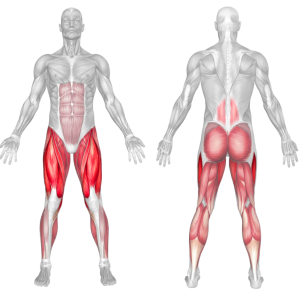The Smith Machine Lunge is a strength training exercise that targets the muscles in the lower body, including the quadriceps, hamstrings, and glutes. The barbell on the Smith machine is fixed in a vertical plane, allowing for controlled and guided movements. This stability feature makes the exercise particularly well-suited for beginners or individuals facing challenges with balance.
How to do Smith Machine Lunge
For individuals new to strength training or weightlifting, the Smith Machine Lunge offers a more straightforward introduction to lunges compared to free weights. Here’s how you can perform the Smith machine lunge:

- Set Up:
- Adjust the Smith machine bar to a suitable height. It should be positioned at about chest or shoulder level.
- Load an appropriate amount of weight onto the bar.
- Starting Position:
- Stand with your feet hip-width apart, facing away from the Smith machine.
- Position yourself in a way that the barbell is resting on your upper back and shoulders.
- Foot Placement:
- Take a step forward with one foot, ensuring it is a comfortable distance from the Smith machine. The distance will depend on your own stride length.
- Keep your feet in a split stance, with one foot forward and the other foot back.
- Lunging Movement:
- Lower your body by bending both knees, ensuring that your front knee is directly above your ankle, and your back knee is pointing down toward the floor.
- Aim to lower your back knee towards the ground without letting it touch.
- Keep your torso upright and maintain a straight line from your head to your hips.
- Pushing Back:
- Push through the heel of your front foot to return to the starting position.
- Continue alternating legs for the desired number of repetitions.
Tips:
- Engage your core muscles to maintain balance and stability.
- Keep your chest up and shoulders back throughout the movement.
- Ensure that your knee does not go past your toes when lunging forward.
- Control the descent and ascent of the movement to work the muscles effectively.
- Start with a light weight to master the technique before adding more resistance.
Benefits:
Isolation of Leg Muscles:
Smith Machine Lunges target the quadriceps, hamstrings, and glutes effectively. The stabilized movement pattern allows for focused isolation of these muscles, contributing to strength development and muscle definition.
Stability and Safety:
The Smith machine provides a fixed vertical path for the barbell, which can enhance stability during lunges. This stability is especially beneficial for beginners or those who are working out without a spotter.
Reduced Joint Strain:
The controlled nature of the Smith Machine Lunge can be gentler on the joints, particularly for individuals with knee or hip concerns. The guided movement minimizes abrupt or uncontrolled motions, potentially reducing the risk of joint strain.
Assistance with Balance:
The stability provided by the Smith machine can assist individuals who may have balance challenges or are working on improving their balance. This can be particularly relevant for older adults or those recovering from injuries.
Controlled Tempo:
The Smith Machine Lunge encourages a controlled and deliberate tempo during both the descent and ascent phases of the exercise. This emphasis on control can enhance muscle engagement and reduce the risk of using momentum to complete the movement.
Smith Machine Lunge: Muscles Worked

